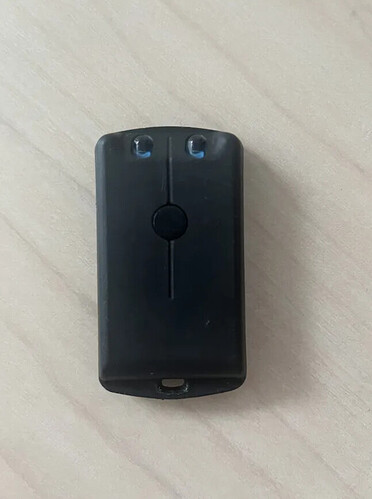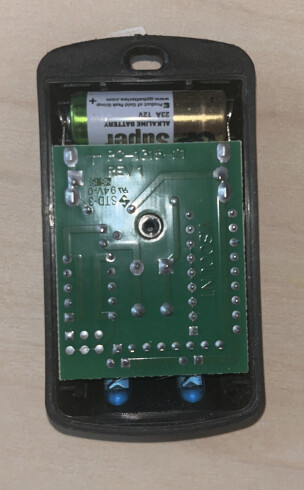Im pretty sure it isn’t a rolling code, I just went to someone who copies fobs and handed him my existing fob. He copied and handed me a similar looking fob that also has a button in the middle. I tried the newly copied fob on my door and it worked once, then I tried it again and it didn’t work. I then used the original fob and the door was opened. The strange thing is that the flipper zero cannot read this newly copied fob either, but it still reads the original one.
What kinds of patterns would I be looking for?
I saved a few after reading it a couple times and exported the file. It looks something like this
Filetype: IR signals file
Version: 1
#
name: 1
type: raw
frequency: 38000
duty_cycle: 0.330000
data: 71 3785 87 3745 135 3729 135 3770 72 3790 77 3784 82 3747 134 3784 81 675 84 3019 138 3726 137 658 82 3055 86 3785 73 3748 138 3803 73 3748 137 657 84 3077 82 3786 75 3748 137 3768 75 3784 83 3744 136 661 78 3058 83 3745 136 3781 86 3780 81 3749 131 3732 132 3777 62 3793 75 7681 83 11497 130 7633 128 3768 78 3751 130 3800 80 19263 91
#
name: 2
type: raw
frequency: 38000
duty_cycle: 0.330000
data: 80 3782 80 3750 129 7629 81 3752 126 3737 91 7686 78 647 127 3046 74 7652 91 15428 73 7674 90 7666 80 3786 75 11546 81 3807 70 3791 75 3789 71 3797 65 3789 81 3782 81 3748 130 661 80 3027 130 3786 80 3784 78 3783 81 677 81 3062 74 3789 75 3749 135 3764 81 684 67 3066 76 3838 82 3743 138 3767 75 3793 66 3750 139 3767 72 687 70 3069 68 3783 139 4501 139 3043 72 7611 139 3774 64 3791 74 688 67 3826 73 3064 77 3817 78 3787 73 15380 72 7653 77 3764 138 3758 139 3771 66 644 139 6908 69 3748 138 619 139 3000 138 3724 138 664 70 3088 72 3793 68 3796 66 7661 65 3794 69 3829 68 3794 69 3816 66 7612 140 3722 141 11450 138 7686 70 15419 66 3750 138 4480 140 2999 139 7688 67 7659 67 3797 66 4551 70 3827 68 3070 69 3814 67 643 140 2999 140 3770 68 7612 139 7618 141 666 67
#
name: 3
type: raw
frequency: 38000
duty_cycle: 0.330000
data: 144 7583 143 3719 143 12202 145
#
name: 233samples
type: raw
frequency: 38000
duty_cycle: 0.330000
data: 141 3723 140 3723 140 3774 64 3796 68 7654 78 3790 68 3813 70 687 72 3064 79 4544 75 6929 71 3791 73 689 66 7688 79 3082 75 3789 73 7612 138 3767 76 3786 77 682 75 3060 82 3786 72 3812 70 7654 76 7653 72 3748 139 4529 67 3068 75 3810 70 3748 140 7666 70 3798 65 3793 72 4550 70 3067 72 688 68 3091 68 3795 68 7613 139 7631 72 688 68 3825 75 3066 70 4570 71 6932 70 3795 68 3748 140 4526 71 3825 73 3064 78 7684 71 3749 138 3725 138 3770 68 7613 139 3767 74 3766 137 621 137 6908 70 644 138 3041 78 3788 72 3748 137 659 81 3062 74 3792 67 689 70 3087 74 3790 73 3749 136 3768 71 3791 75 3783 83 642 132 3042 78 3748 134 3786 79 3749 131 3769 75 3750 133 3731 131 3765 81 3785 73 649 129 3044 78 3769 132 3764 83 3789 65 3825 79 3787 70 3757 129 3769 74 684 75 3059 81 677 81 3078 81 3750 130 3770 72 3791 74 3793 67 3754 132 626 133 3040 81 679 78 3062 77 3770 130 627 132 3047 69 3792 74 3788 77 3750 133 3766 78 684 69 3064 79 641 136 3044 73


 )
)


